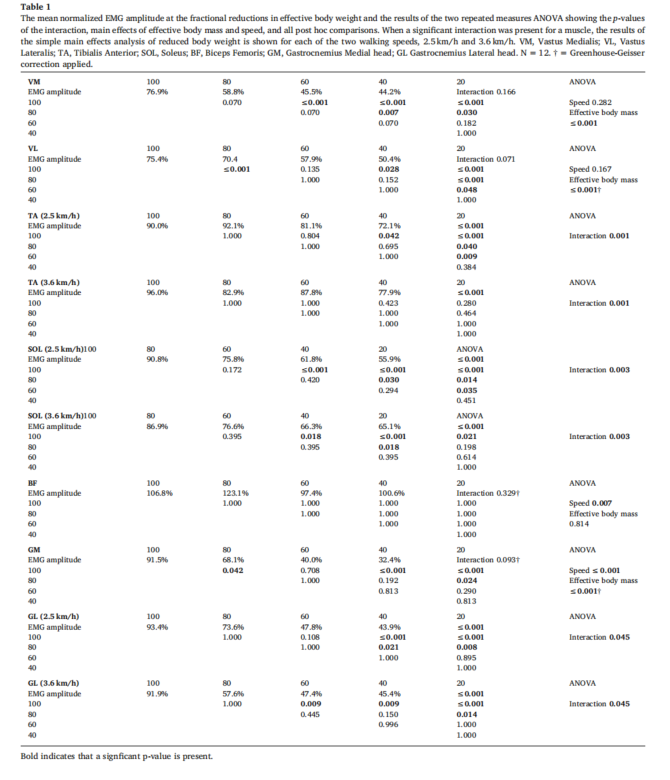In recent years a new device, the Lower Body Positive Pressure Treadmill (Anti-gravity treadmill), has been developed. The Lower Body Positive Pressure Treadmill (Anti-gravity treadmill) is an increasingly popular training and rehabilitation modality that offers the opportunity to reduce weight bearing during gait or running in the early phases of rehabilitation, without the negative drawbacks of the aforementioned methods. More precisely, Lower Body Positive Pressure Treadmills (Anti-gravity treadmills) have been shown to effectively reduce ground reaction and joint forces in the lower body during gait and running, while also providing a linear decrease in muscle activation of lower limb muscles in relation to the amount of unloading provided during running. Therefore, the use of a Lower Body Positive Pressure Treadmill (Anti-gravity treadmill) may be a valuable alternative to the present methods used to provide reduced weight bearing to patients commencing a rehabilitation program.
Article cited in: J Electromyogr Kinesiol. 2019 Oct:48:9-16.
Article link:https://pubmed.ncbi.nlm.nih.gov/31176846/
The aim of this study was to investigate how various fractions of reduced effective body weight affects muscle activation levels during walking at two different speeds (2.5 and 3.6 km/h) in a Lower Body Positive Pressure Treadmill (Anti-gravity treadmill) device.In general, all muscles exhibited significantly decreased EMG amplitudes, reflecting the fractional reduction in effective body weight during both walking speeds, except for Tibialis Anterior and Biceps Femoris. The EMG amplitude was only significantly decreased in Tibialis Anterior when effective body weight was reduced to either 40% or 20% at a walking speed of 2.5 km/h.However, no significant reductions occurred in Tibialis Anterior when walking at 3.6 km/h. This was similar for Biceps Femoris where no decrease occurred at all.These results generally supported our initial hypothesis that muscle activation of the extensor muscles of the lower body would decrease while activation of the propulsive muscles, would remain unaffected.

In conclusion, walking with body weight support in a Lower Body Positive Pressure Treadmill (Anti-gravity treadmill) , significantly decreased muscle activation of the musclesvastus medialis , vastus lateralis , medial and lateral head of gastrocnemius, Soleus. Greater reductions in effective body weight (≥40%) and a slow walking speed (2.5 km/h) were needed to significantly decrease the activation of the Tibialis Anterior muscle. The muscle activation of Biceps Femoris remained unaffected across all fractional reductions in effective body weight and walking speeds. These findings suggests that the muscles of the lower limb respond differently to the body weight support provided by the Lower Body Positive Pressure Treadmill (Anti-gravity treadmill) during walking, thus making the Lower Body Positive Pressure Treadmill (Anti-gravity treadmill) a possible rehabilitation solution for some, but not all injuries to the lower limbs.